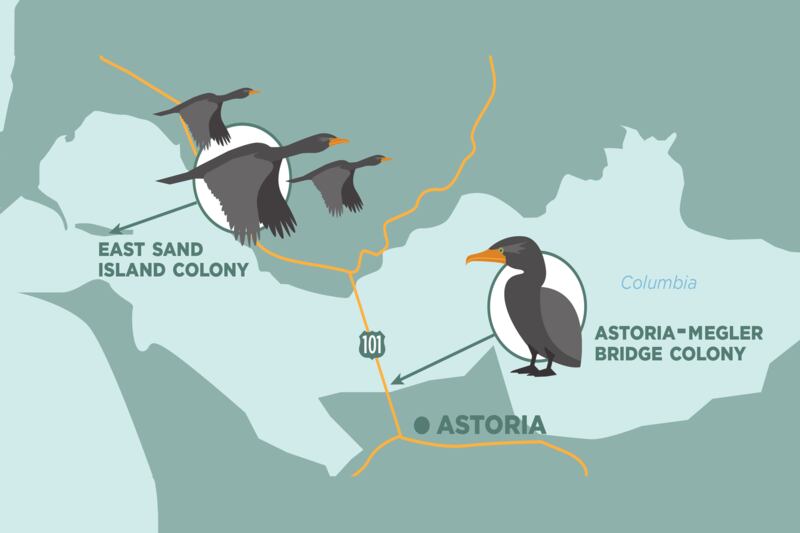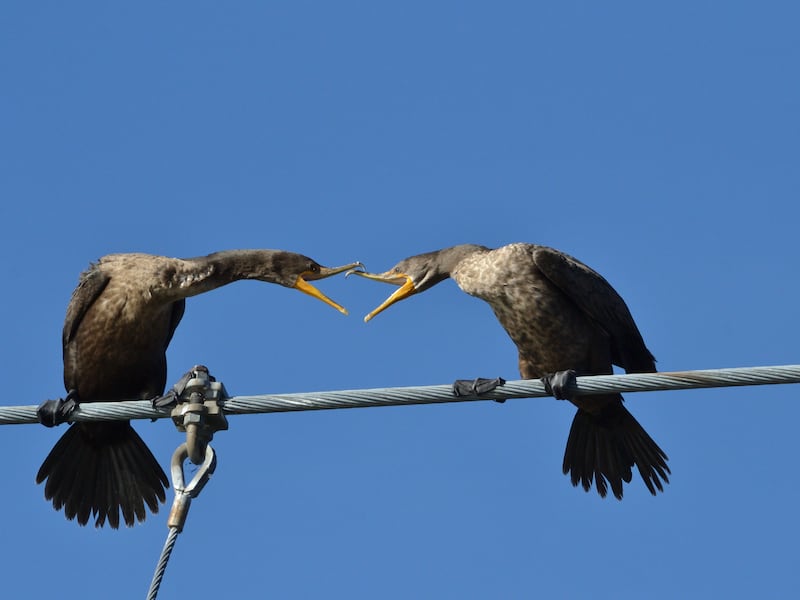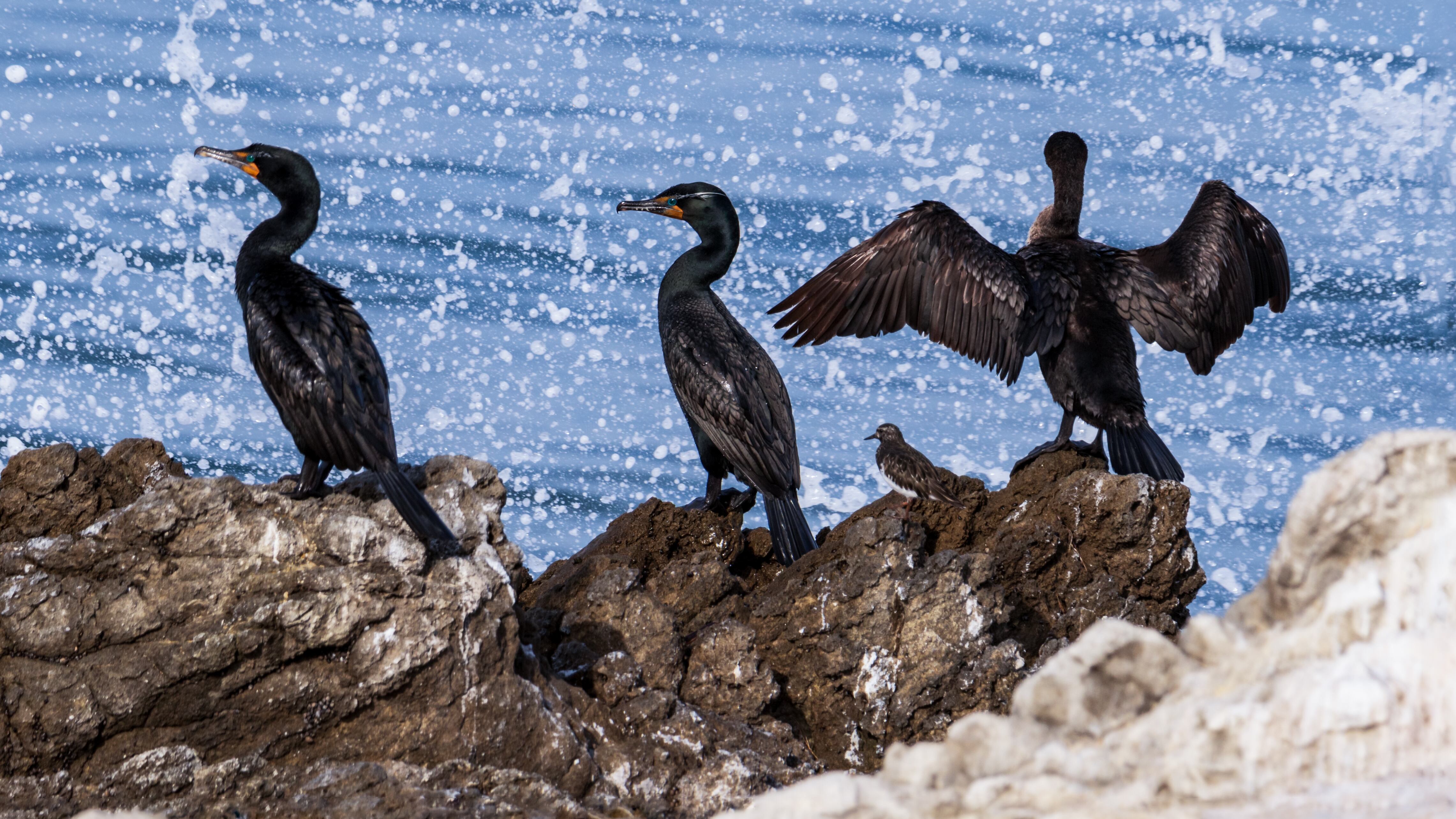A new study from the Oregon Department of Transportation recommends relocating nesting colonies of double-crested cormorants from the Astoria-Megler Bridge about 8 miles downriver to East Sand Island—the spot from which state and federal officials evicted the cormorants less than a decade ago.
If the plan moves forward, it will be complicated and expensive, costing about $18.4 million over four years.
ODOT convened a panel this summer to examine ways to reduce harm—both to the 4.1-mile 57-year-old bridge near the mouth of the Columbia and the cormorants, whose guano causes an estimated $1 million in damage to the bridge annually.
Living on the bridge is also hazardous to the birds, five to 10 of which collide with vehicles daily, and devastating for the various species of juvenile salmonoids that swim under the bridge. The ODOT report says, for instance, that the goose-sized cormorants eat about 12% of the steelhead that swim under the bridge (the birds weigh about 4 pounds each but can eat 1 to 1 1/2 pounds of fish per day). Steelhead are federally protected under the Endangered Species Act, but cormorants don’t much care.
The irony in the proposed relocation of the cormorants to East Sand Island comes from the fact that local, state and federal government officials, led by the U.S. Army Corps of Engineers, killed thousands of cormorants living on East Sand Island less than a decade ago—to encourage the flock to leave the island because the cormorants were eating so many steelhead and other salmonoids there.

They scared some of the birds away, shot thousands of others, and even poured vegetable oil in their nests to dissuade them from returning.
WW examined the federal bird kill and its feeble results in a 2019 story.
Now, the plan is to welcome the cormorants back to the island.
In a Dec. 18 statement, groups such as Bird Conservation Oregon, the Humane Society of the United States, and Willamette Riverkeeper said they are “cautiously supporting” ODOT’s plan.
“This recommendation is both exciting and heartbreaking,” said Bob Sallinger, director of Bird Conservation Oregon. “Returning cormorants to East Sand Island is the right decision, but it also shows that the wanton slaughter of cormorants on East Sand Island by our federal government was entirely unnecessary and misguided. We stand ready to work with the agencies and other stakeholders to restore the colony and repair the damage that has been done.”

Sallinger adds that before officials booted the cormorants from East Sand Island, the colony there included about 30,000 double-crested cormorants, equal to about 40% of the species’ number west of the Rocky Mountains.
After the move, the number of double-crested cormorants declined significantly. But according to the new ODOT report, officials estimate the birds are actually eating more endangered fish because the fish are more concentrated near the bridge.
ODOT hopes to begin the relocation of the birds in 2024 or 2025, a process that will include restoring habitat, some of which officials previously bulldozed into the river to get the cormorants to leave.
Advocates hope the plan will lead to a healthier ecosystem, but they also worry that tinkering with the cormorants addresses the symptoms, rather than the cause, of the underlying problem.
“We work to protect fish and wildlife populations in the Columbia River System,” said Travis Williams, executive director of Willamette Riverkeeper. “The actions of the Corps on East Sand Island harmed both cormorants and salmon. We look forward to working with the agencies on real solutions to protect both and address the primary cause of salmon declines—the dams.”

